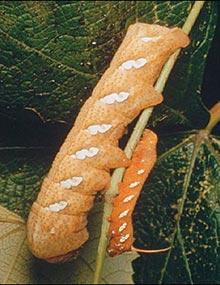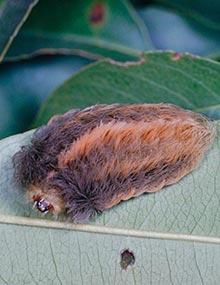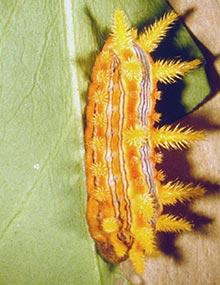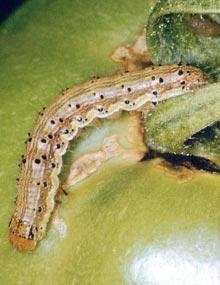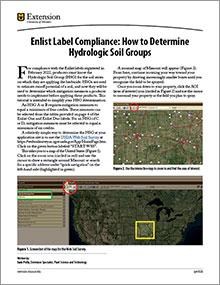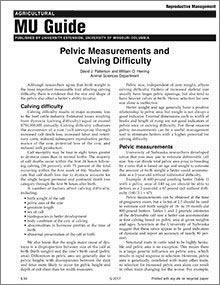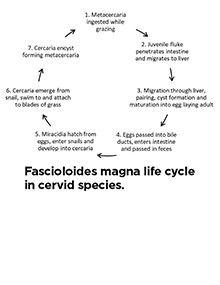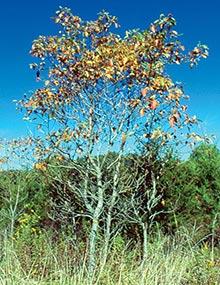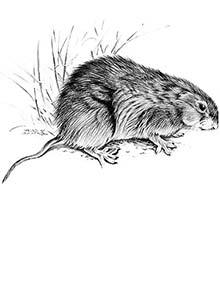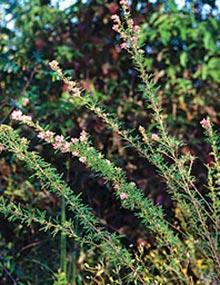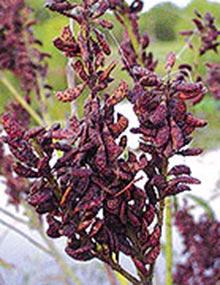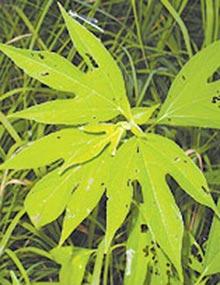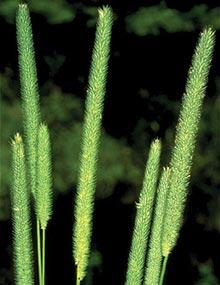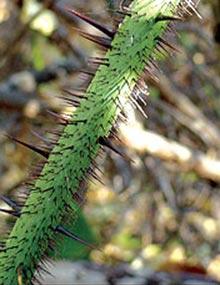Caterpillars in Your Yard and Garden, Page 02
Reviewed
Achemon sphinx caterpillars (Eumorpha achemon) are present from early summer to fall. They produce one to two generations per year.
Caterpillars in Your Yard and Garden, Page 37
Reviewed
Roseslug caterpillars (Endelomyia aethiops) are present in summer. They produce one generation per year.
Caterpillars in Your Yard and Garden, Page 05
Reviewed
Banded woollybear caterpillars (Pyrrharctia isabella) are present in the spring and from late summer to late fall. They produce one to two generations per year.
Caterpillars in Your Yard and Garden, Page 08
Reviewed
Catalpa sphinx caterpillars (Ceratomia catalpae) are present from early summer to early fall. They produce multiple generations per year.
Caterpillars in Your Yard and Garden, Page 40
Reviewed
Spicebush swallowtail caterpillars (Papilio troilus) are present from May to October. They produce two to three generations per year.
Caterpillars in Your Yard and Garden, Page 11
Reviewed
Crinkled flannel moths caterpillars (Lagoa crispata) are present in summer and fall. They produce two generations per year.
Caterpillars in Your Yard and Garden, Page 43
Reviewed
Stinging rose caterpillars (Parasa indetermina) are present in summer and fall. They produce one to two generations per year.
Caterpillars in Your Yard and Garden, Page 14
Reviewed
Eight-spotted forester caterpillars (Alypia octomaculata) are present from spring to early fall. They produce one to two generations per year.
Caterpillars in Your Yard and Garden, Page 46
Reviewed
Tomato fruitworm, corn earworm caterpillars (Helicoverpa zea) are present in mid-June. They produce two generations per year.
Reducing Losses When Feeding Hay to Beef Cattle
Reviewed
Feeding hay to cattle is expensive, mostly due to waste. Learn good management practices to minimize the losses that occur due to poor storage methods, improper feeding methods, or both.
Enlist Label Compliance: How to Determine Hydrologic Soil Groups
New
Learn how to use the USDA Web Soil Survey interactive map to determine your field's hydrologic soil group for the soil series on which you plan to apply an Enlist herbicide.
Missouri Farm Labor Guide
Revised
Learn good human resource practices related to employee recruitment, hiring, onboarding, training and termination that your farm or agribusiness can use.
Pelvic Measurements and Calving Difficulty
Reviewed
Although researchers agree that birth weight is the most important measurable trait affecting calving difficulty, there is evidence that the size and shape of the pelvis also affect a heifer’s ability to calve.
Liver Flukes in Missouri: Distribution, Impact on Cattle, Control and Treatment
Reviewed
Cattle operations should evaluate their risk for is Fascioloides magna, also known as the deer fluke or the giant liver fluke. Learn about its distribution in Missouri, its life cycle, treatment and more in this guide.
Quail-Friendly Plants of the Midwest, Page 45
Reviewed
Sassafras trees are short to medium-sized. Its leaves have margins of three shapes: entire, one-lobed and three-lobed. The twigs have a yellow-green hue and turn upward at the tips. The dark blackish-blue fruits attach to a long, red, swollen stalk.
Controlling Voles in Horticulture Plantings and Orchards in Missouri - Page 3
Reviewed
Meadow voles and prairie voles spend most of their lives above ground, living in and feeding on grasses and seeds. They may travel as far as 1/4 mile in search of food and cover. Their typical habitat includes lightly grazed pastures, old fields and grassy areas, lawns and gardens.
Quail-Friendly Plants of the Midwest, Page 13
Reviewed
Shrub dogwoods are common in fence lines and along forest edges. Individual plants are rather short (less than 12 feet tall) and somewhat rounded.
Quail-Friendly Plants of the Midwest, Page 48
Reviewed
Slender lespedeza leaves are divided into three leaflets 1 to 1-1/2 inches long and less than 1/4 inch wide. Stems are upright, up to 3 feet tall. Flowers are pink to purple and occur in clusters toward the top of the plant.
Quail-Friendly Plants of the Midwest, Page 16
Reviewed
False indigo occurs in moist ground in thickets along streams, rocky banks, pond borders and open wet woods. The leaves are pinnately compound. The dense flower clusters are deep purple to blue and produce numerous fruits that mature in late summer.
Quail-Friendly Plants of the Midwest, Page 51
Reviewed
Sunflowers exhibit a variety of characteristics, but most of the commonly encountered species have triangular to lanceolate leaves, rough leaf surfaces and conspicuous yellow flowers.
Quail-Friendly Plants of the Midwest, Page 19
Reviewed
Giant ragweed attains a considerable height, often in excess of 7 feet. Its leaves are three-lobed (sometimes five-lobed), and its stems may be 3/4 inch or more in diameter at the plant base.
Quail-Friendly Plants of the Midwest, Page 54
Reviewed
Timothy is a cool-season bunch grass. By late spring it can be readily identified by the blue-green, cylindrical seed head resembling a small cattail. It has an elongated ligule at the base of the leaf, with a notch on each side.
Quail-Friendly Plants of the Midwest, Page 22
Reviewed
Greenbriers grow as stout vines, climbing with the aid of tendrils that arise in pairs at the base of leaf stalks. The flowers are small and green and grow in clusters of 5 to 26 flowers on long stalks.
Quail-Friendly Plants of the Midwest, Page 57
Reviewed
Three species of wild bean occur in the Midwest. Each is a somewhat small plant with twining vines and relatively small leaves composed of three leaflets. Seeds are present in hairy pods.
